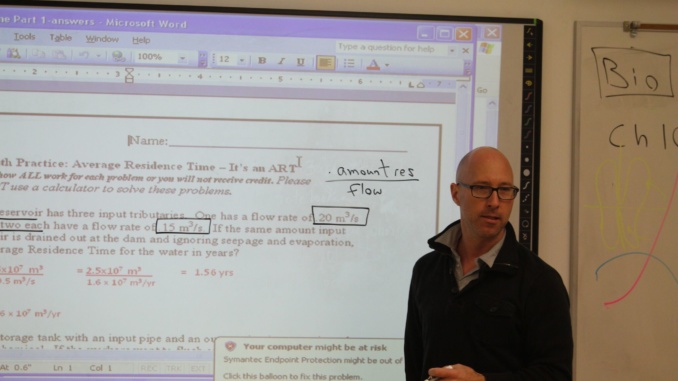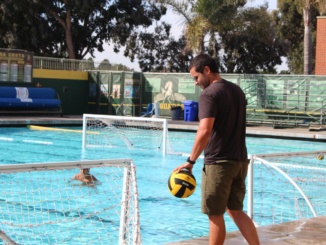
By Hannah Parker
News Editor
Mira Costa advanced placement environmental sciences teacher Trevor Oystrick transitioned to a flip-classroom teaching style for the second semester of the school year, in order to better students’ understanding of lectures.
AP chemistry teacher Teresa Nielsen has also transitioned her class to a flipped set-up. Oystrick has taught APES for 4 years and currently teaches 4 classes. Last semester, Oystrick lectured the unit leading up to the test and conducted two labs. However, test questions that were lecture based were missed by 60 percent of students, according to Oystrick.
“The test scores I was seeing were not satisfactory for the lecture based learning that my classes were based on,” Oystrick said. “Because of this, I started to research and and I found that flipping the classroom has a lot of benefits because students are able to re-watch the lecture in order to fully understand.”
Photos: View the inside of Oystrick’s classroom and Costa students at work.
Oystrick was motivated to change his teaching style in order to conduct more labs, activities and answer student questions during class time, he said. Although the amount of points in the gradebook will remain the same as last semester, more points will be distributed to the lab and group work category, compared to individual homeworks.
“This is a college based science class,” Oystrick said. “Because of this, we should be conducting more labs then we have previously done. I want to make sure that in class we are able to have discussions so students feel comfortable.”
Video: Listen to APES student Emily Seth review the new teaching technique.
Students spent the beginning of second semester, so far, creating their own screencasts based on Oystricks lecture notes in groups of four. After the first podcast is completed, students will continue to create different screencasts that Oystrick will consider showing to next year’s classes.
Evaluate: learn the pros and cons of a flipped classroom.
Costa AP and Honors Chemistry teacher, Teresa Nielsen, has been teaching her classes with flipped classroom set-up, since she came to Costa five years ago. Nielsen’s classes are instructed to watch Bozeman Science Videos at home, in order to understand the class’s content. Students are then able to apply their knowledge to the labs done in class. This teaching strategy is primarily used for her AP classes due to the high amount of labs, according to Nielsen.
Read: learn the facts and details about the flipped classroom technique.
“Students are kept accountable by filling out Google forms so I know they keep up with the online lectures,” Nielsen said. “This is beneficial for students because I don’t have to spend class time disseminating information, but I can hold class discussions.”
According to standards emplaced by the College Board, AP chemistry is required to spend 25 percent of their class time in the lab. As a result, the majority of class time is spent focusing on labs. The flipped teaching style, using Bozeman’s total of 71 chemistry tutorial videos, lasting five to ten minutes, to allow the class to meet the Board’s requirements.
“In Costa classes, we look for an increase in student talk and engagement,” Costa principal Dr. Ben Dale said. “No one has said that we want teachers to flip their classrooms. But if they can accompany the delivering of content with a video, then that is great.”




Leave a Reply